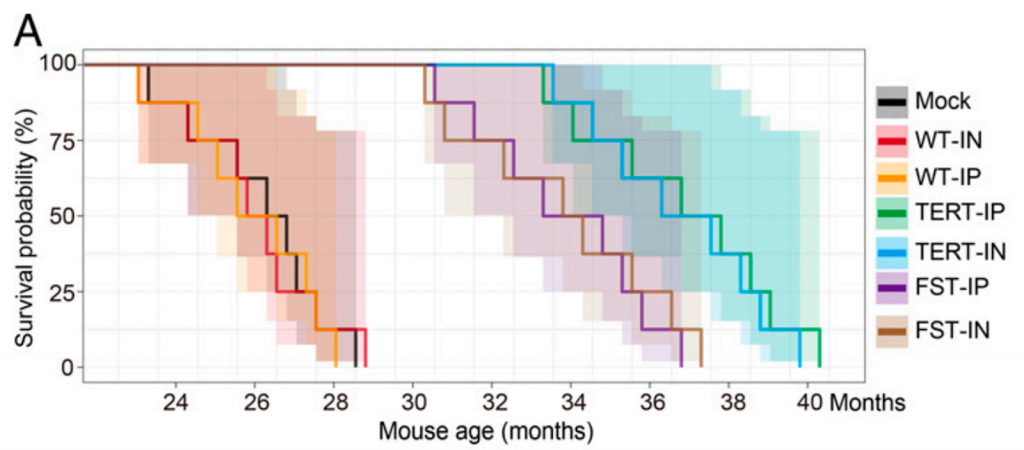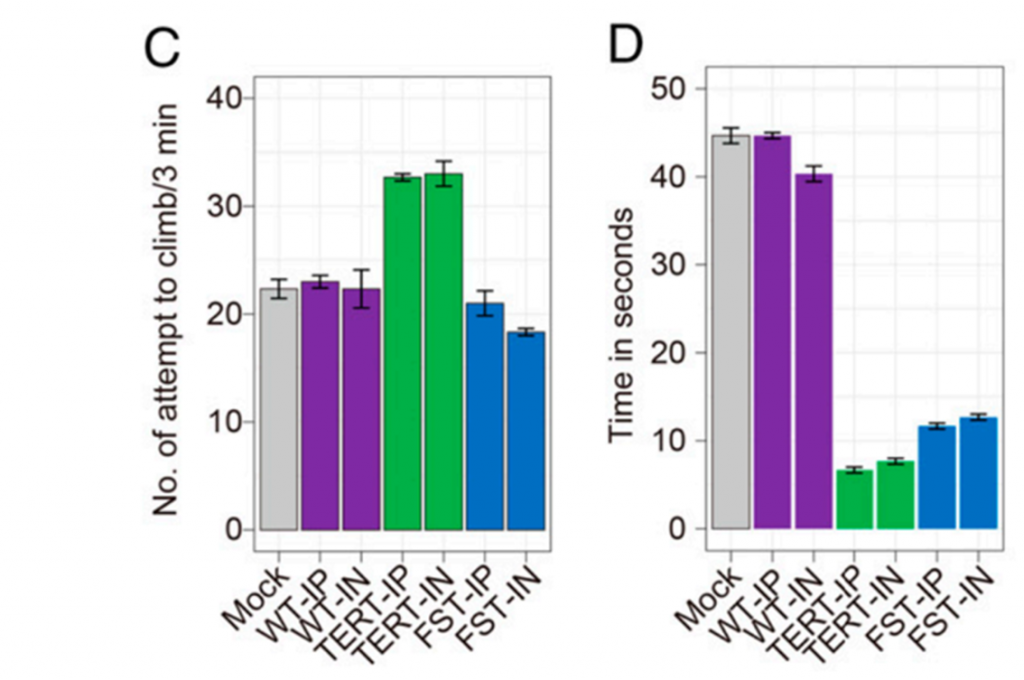Key Points:
- TERT gene therapy prolongs the median lifespan of mice by 41.4%, and FST gene therapy increases lifespan by 32.5%.
- Both TERT- and FST-treated mice exhibit improved physical activity and coordination.
- Transferring TERT and FST into aged mice reduces hair and weight loss.
Our DNA holds the blueprint for all our potentially activated or deactivated genes. As many age-related diseases are a result of genes being deactivated, scientists have continuously explored ways to sustain and boost the activity of genes that are critical to healthy aging.
In an article published in the journal PNAS, researchers from Rutgers New Jersey Medical School demonstrate that delivering age-related genes to aged female mice — via cytomegaloviruses (CMV) vectors — prolongs lifespan, boosts physical function, and minimizes hair and weight loss. The study’s findings not only confirm the safety and efficacy of intranasal and injectable gene therapy but also highlight the potential of utilizing CMV vectors to deliver genes that can extend lifespan and protect against age-associated diseases.
Gene Therapy Prolongs Lifespan
With the goal of prolonging longevity, Jaijyan and colleagues examined whether viral vectors carrying TERT (MCMVTERT) or FST (MCMVFST ) successfully extend mouse lifespan. MCMV vectors were delivered to the bloodstream via the abdominal cavity (IP -intraperitoneally), the nose (IN -intranasally), or not at all (mock). Results showed that mice treated with MCMVTERT had a median lifespan of 37 months, demonstrating a 40% increase in median lifespan compared to mock mice (26 months) and control mice (26 months) that received MCMV’s lacking TERT and FST. Additionally, mice treated with MCMVFST displayed a median lifespan of around 35 months, showing a 30% increase from mock and control mice. Notably, both IP and IN gene delivery were equally effective at increasing lifespan, indicating that the route of inoculation doesn’t affect gene activity. Taken together, these findings show that CMV’s are safe and effective at delivering life-extending genes.

Why TERT and FST are Critical to Healthy Aging
Upon aging, the repetitive DNA sequence of DNA molecules at the ends of our chromosomes – telomeres – get trimmed off as a result of continual cellular replication and damage. What makes these protective DNA caps so special is that they maintain DNA’s ability to replicate, thus keeping cells alive. To counter telomere shortening as we get older, our bodies activate TERT to lengthen telomeres. Given that telomere erosion has been linked to increased morbidity, shorter lifespans, and cardiovascular disease, it’s imperative that TERT remains functional for healthy aging.
Another gene that promotes healthy aging is FST, which plays a vital role in muscle development. Rodent studies confirm that FST increases skeletal muscle mass by nearly two-fold. What’s more, FST knockout mice, which lack FST, exhibit reduced and frail muscle cells fibers, muscle skeletal abnormalities, and decreased body mass, all of which contribute to age-associated physical decline. With this in mind, the evidence suggests that FST may serve as a potential therapeutic for preventing the onset of muscular diseases associated with aging.
Gene Therapy Boosts Physical Activity and Coordination
Next, the Rutgers researchers wanted to see if CMV gene therapy could boost physical activity and coordination in aged 24-month-old mice. First, investigators placed mice individually in a beaker and tracked the amount of times they tried to climb and escape during a three minute period. Although the recorded attempts of MCMVFST mice were nearly equal to mock and control mice, MCMVTERT mice greatly exceeded previous efforts to escape, with 40% more attempts.
Jaijyan and colleagues then conducted a balance beam test to evaluate coordination. Mock and control mice averaged around 43 seconds to successfully cross the balance beam. On the other hand, MCMVTERT and MCMVFST mice traversed the beam in ~7.5 seconds and 12.5 seconds, exhibiting superior coordination. Thus, both physical tests confirmed that CMV gene therapy improves physical activity and motor control in aged mice.

Gene Therapy Reduces Weight Loss
Body mass decreases with age and is usually tied to reduced muscle mass, which contributes to frailty upon aging. When investigators monitored body mass in all experimental groups, they found that MCMVFST mice retained most of their body weight. Interestingly, previous animal studies also show that FST treatment increases body mass but note that these increases heavily correlate with gained muscle mass. This could potentially explain why the MCMVFST mice outperformed all other mice in the physical tests. Nevertheless, more research is needed to confirm this hypothesis.
“We anticipate that sarcopenia, muscular dystrophy, or even special circumstances causing muscle atrophy, such as low-gravity exposure during space travel, could be mitigated with a CMV-based FST gene delivery method,” states Jaijyan and colleagues.

Is Gene Therapy the Key to Healthy Aging?
The study’s findings provide great insight into the potential of CMV gene therapy in hampering the progression of age-related diseases. Also, CMV gene therapy opens the door to targeting multiple ailments simultaneously. One thing to point out is that CMV gene therapy requires monthly administration to achieve the desired effects, which potentially limits the risk of long-term consequences since the therapeutic doesn’t stay active for long periods of time. With this in mind, CMV gene therapy appears to be safe and effective in mice, but further research is needed to assess human translatability.